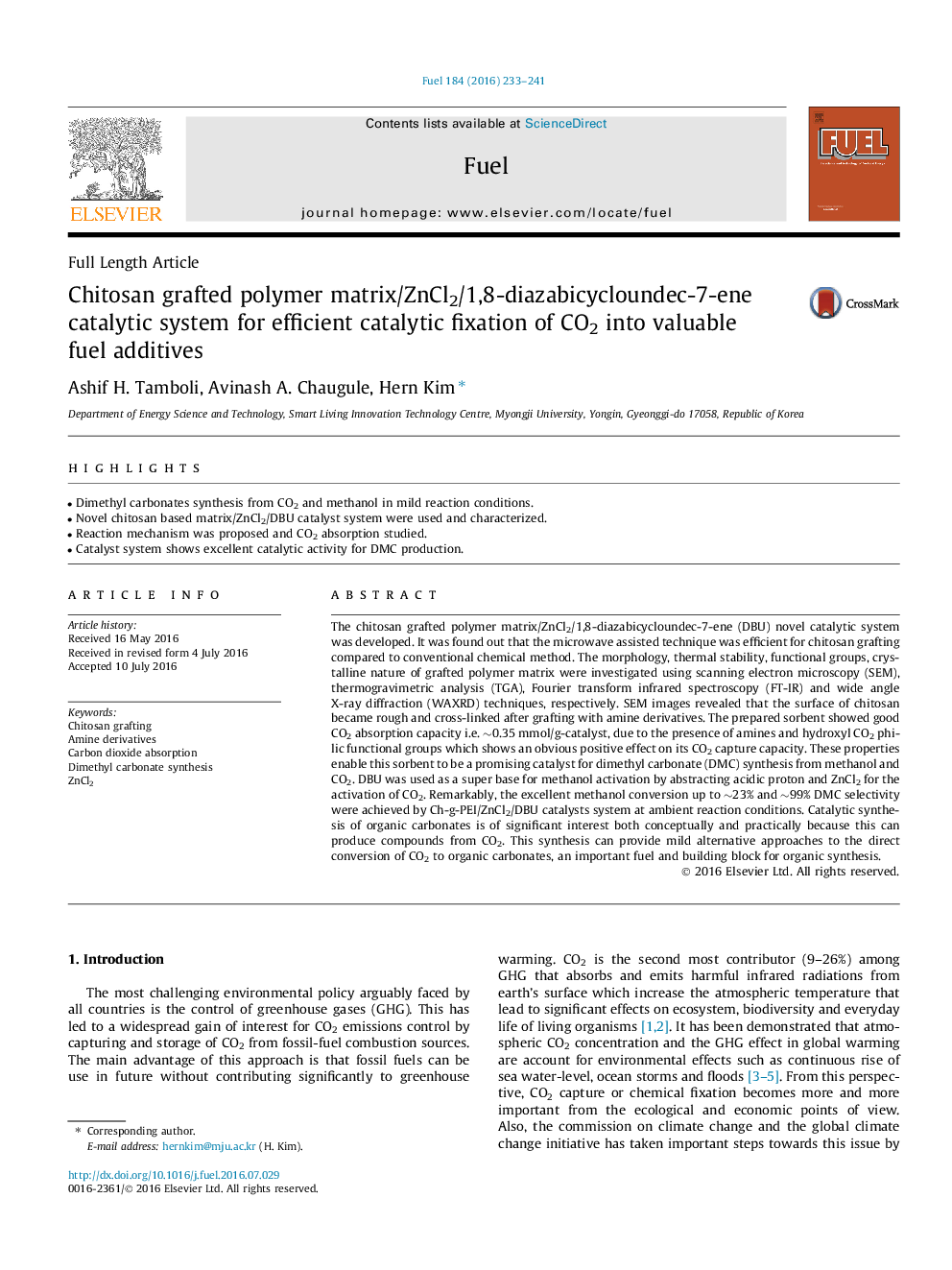| Article ID | Journal | Published Year | Pages | File Type |
|---|---|---|---|---|
| 6632990 | Fuel | 2016 | 9 Pages |
Abstract
The chitosan grafted polymer matrix/ZnCl2/1,8-diazabicycloundec-7-ene (DBU) novel catalytic system was developed. It was found out that the microwave assisted technique was efficient for chitosan grafting compared to conventional chemical method. The morphology, thermal stability, functional groups, crystalline nature of grafted polymer matrix were investigated using scanning electron microscopy (SEM), thermogravimetric analysis (TGA), Fourier transform infrared spectroscopy (FT-IR) and wide angle X-ray diffraction (WAXRD) techniques, respectively. SEM images revealed that the surface of chitosan became rough and cross-linked after grafting with amine derivatives. The prepared sorbent showed good CO2 absorption capacity i.e. â¼0.35Â mmol/g-catalyst, due to the presence of amines and hydroxyl CO2 philic functional groups which shows an obvious positive effect on its CO2 capture capacity. These properties enable this sorbent to be a promising catalyst for dimethyl carbonate (DMC) synthesis from methanol and CO2. DBU was used as a super base for methanol activation by abstracting acidic proton and ZnCl2 for the activation of CO2. Remarkably, the excellent methanol conversion up to â¼23% and â¼99% DMC selectivity were achieved by Ch-g-PEI/ZnCl2/DBU catalysts system at ambient reaction conditions. Catalytic synthesis of organic carbonates is of significant interest both conceptually and practically because this can produce compounds from CO2. This synthesis can provide mild alternative approaches to the direct conversion of CO2 to organic carbonates, an important fuel and building block for organic synthesis.
Related Topics
Physical Sciences and Engineering
Chemical Engineering
Chemical Engineering (General)
Authors
Ashif H. Tamboli, Avinash A. Chaugule, Hern Kim,
